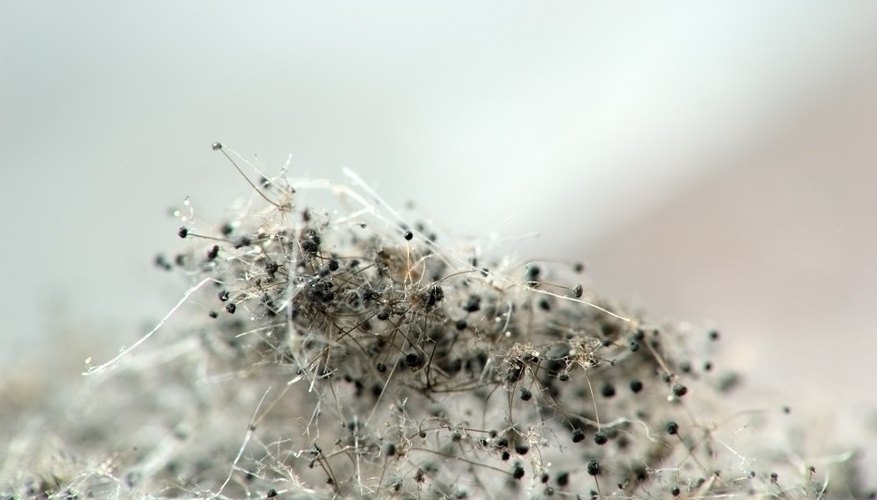Medium density fibreboard--also known as MDF--is a popular building material for cabinet speakers, cupboards and bookcases. If the unpainted MDF becomes wet or damp, mould and mildew can begin to grow. The mould and mildew can be an eyesore as well as fill your home with spores that can spread the mould to other areas. If mould and mildew is left untreated, it can deteriorate the MDF beyond repair. Fortunately, you can remove the mould and mildew from unpainted MDF with a few household items.
- Medium density fibreboard--also known as MDF--is a popular building material for cabinet speakers, cupboards and bookcases.
- If mould and mildew is left untreated, it can deteriorate the MDF beyond repair.
Equip yourself with a pair of rubber gloves, an N-95 respirator and safety goggles without vent holes. This is the proper safety gear for the mould removal process.
Open the doors and windows in the area to allow for proper air ventilation and circulation. This will also help with the drying process.
Wipe the surface mould and mildew from the unpainted MDF with a damp cloth.
- Open the doors and windows in the area to allow for proper air ventilation and circulation.
- Wipe the surface mould and mildew from the unpainted MDF with a damp cloth.
Fill a 20 litre (5-gallon) bucket with lukewarm water. Add one cup of bleach and a quarter cup of mild dish-washing liquid.
Saturate a clean sponge in the bleach-water mixture.
Scrub the MDF with the sponge. Scrub the parts the mouldy areas as well as the surrounding areas.
Allow the mixture to sit on the MDF for 15 minutes.
Fill a container with cool water. Saturate a clean cloth in the water. Rinse the MDF by wiping it down with the cloth.
Allow the MDF to air dry. Position fans in the direction of the MDF to help in the drying process.
WARNING
Do not mix bleach with ammonia or products containing ammonia. Combining these two chemicals will result in toxic fumes.
